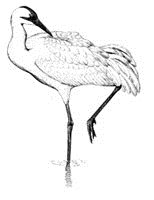North American Crane Working Group

Proceedings of the North American Crane Workshop
Date of this Version
2023
Document Type
Article
Citation
Proceedings of the North American Crane Workshop (2023) 16: 157–166
Abstract
Different rearing and release methods have been used to introduce captive-raised whooping cranes (Grus americana) into eastern North America. One method, parent-rearing, coupled with direct release into the wild, offers several benefits over costume-rearing cranes coupled with guided migration by ultralight aircraft. However, little research has compared how these different rearing methods may influence post-release behavior of cranes in the wild. We compare habitat use between costume and parent-reared cranes. Habitat use is an expression of behavior, where cranes choose which habitats in which to spend their time. Using leg-band-mounted satellite transmitters, we documented habitat use patterns of costume-reared and parent-reared cranes during 2012–2023. We used moving hotspot analysis to identify summering and wintering home ranges, calculated resource selection ratios for non-nesting cranes using landcover (Cropscape) and hydric soils data and compared these ratios between rearing groups with bootstrapped median resource selection ratios during day or night. During daytime in the summer, non-nesting parent-reared cranes used more non-grain/soybean crop cover than costume-reared cranes during the day. Additionally, during the summers, some young whooping cranes moved between several counties and even states, while others stayed in relatively small areas. Habitat use between costume-reared and parent-reared non-nesting whooping cranes was very similar.


Comments
United States government work